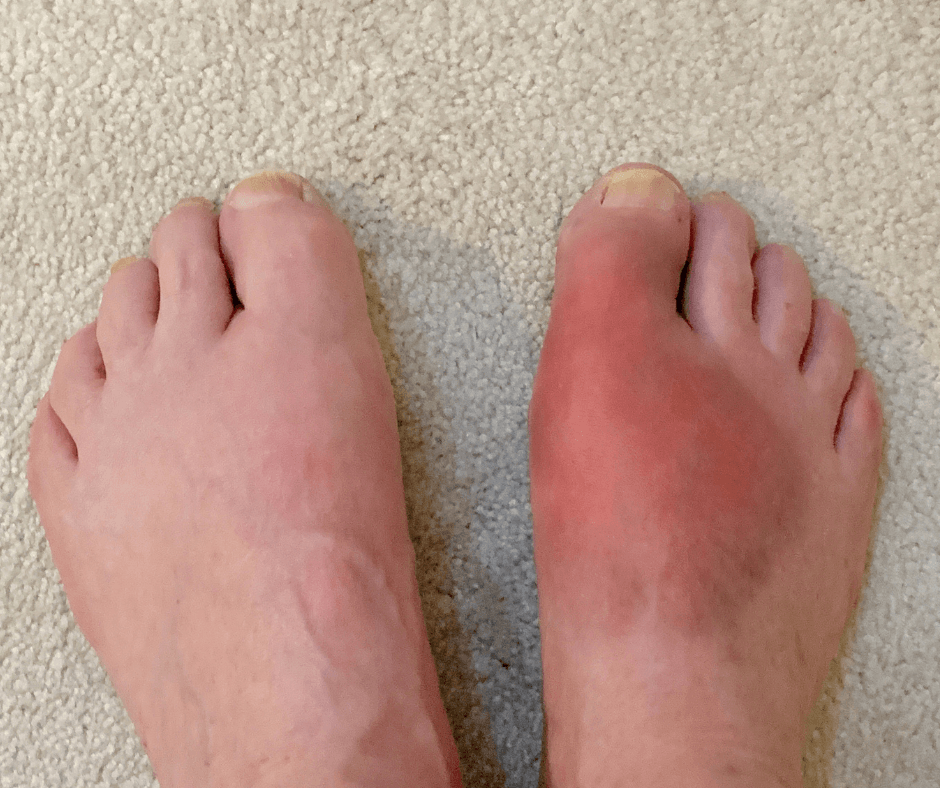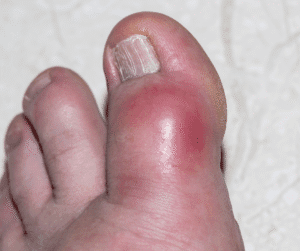Gout
Gout; understanding, managing, and treating this painful condition
Gout is more than just a painful toe, it's a serious medical condition that affects thousands of New Zealanders and can significantly impact your mobility and quality of life. Understanding gout and getting proper treatment can help you manage this condition effectively.
Gout disproportionately affects New Zealanders, with particularly high rates among certain populations:
- 14% of Pacific Island men suffer from gout
- 5% of European men are affected
- Significantly higher rates among people with diabetes
- More common in men than women, though post-menopausal women face increased risk
New Zealand has one of the highest rates of gout in the developed world, making awareness and proper treatment essential.
What is gout?
Gout is a type of inflammatory arthritis caused by excessive uric acid in the bloodstream. When uric acid levels become too high (a condition called hyperuricemia), sharp urate crystals can form and deposit in joints, causing sudden, severe attacks of pain and inflammation.
How gout develops
Your body produces uric acid when it breaks down purines, substances found naturally in your body and in certain foods. Normally, uric acid dissolves in your blood, passes through your kidneys, and exits your body in urine. However, when your body produces too much uric acid or your kidneys don't eliminate enough, crystals form in your joints.

Signs and symptoms of gout
An acute gout attack typically comes on suddenly, often at night, and includes:
- Intense joint pain – Usually affects the big toe first, but can occur in ankles, knees, elbows, wrists, or fingers
- Redness – The affected joint appears bright red or purple
- Swelling – Significant inflammation around the joint
- Heat – The joint feels warm or hot to touch
- Extreme tenderness – Even light touch (like a bedsheet) can be unbearable
- Limited mobility – The pain is often disabling, preventing normal walking or activity
The most severe pain typically occurs within the first 12-24 hours and may gradually subside over several days to weeks.
Treatment options for gout
Effective gout management involves both treating acute attacks and preventing future episodes.
Acute Attack Treatment
- NSAIDs – Anti-inflammatory medications to reduce pain and swelling
- Colchicine – Reduces inflammation specifically associated with gout
- Corticosteroids – For patients who cannot take NSAIDs or colchicine
- Rest and elevation – Keeping weight off the affected joint
- Ice application – Reducing inflammation (15-20 minutes at a time)
Long-term Management
- Urate-lowering medications – Allopurinol or febuxostat to reduce uric acid production
- Dietary modifications – Limiting purine-rich foods and alcohol
- Hydration – Drinking plenty of water to help flush uric acid
- Weight management – Achieving and maintaining healthy body weight
- Regular monitoring – Blood tests and check-ups to track uric acid levels
How Waikato Podiatry can help
Podiatrists play an essential role in gout management, especially when it affects the feet, the most common site for gout attacks.
Accurate diagnosis
We perform thorough foot examinations and work with your GP to ensure proper diagnosis and rule out other conditions.
Pain management
During acute attacks, we provide strategies to reduce pain and protect affected joints while healing occurs.
Footwear advice
Proper shoes can minimize pressure on affected joints and prevent triggering attacks. We'll recommend appropriate footwear for your specific needs.
Biomechanical assessment
We evaluate how gout affects your walking pattern and can provide orthotics or padding to redistribute pressure away from affected joints.
Education and prevention
We'll teach you how to recognize early warning signs and take action to prevent or minimize future attacks.
Collaborative care
We work closely with your GP to ensure coordinated treatment, including medication management and monitoring.

The connection between gout and osteoarthritis
There is a significant relationship between gout and osteoarthritis, particularly in the foot. Repeated gout attacks can damage joint cartilage and lead to chronic arthritis. Additionally:
- Urate crystal deposits can accelerate joint degeneration
- Chronic inflammation promotes osteoarthritic changes
- Gout tophi can directly damage surrounding bone and cartilage
- Both conditions often coexist in the same joints, compounding pain and disability
Take control of your gout today
Don't let gout limit your mobility or quality of life. With proper diagnosis, treatment, and ongoing management, most people with gout can control their symptoms and prevent long-term joint damage.
The team at Waikato Podiatry Clinic is here to help. We work in conjunction with your General Practitioner to provide comprehensive foot care and gout management tailored to your individual needs.


